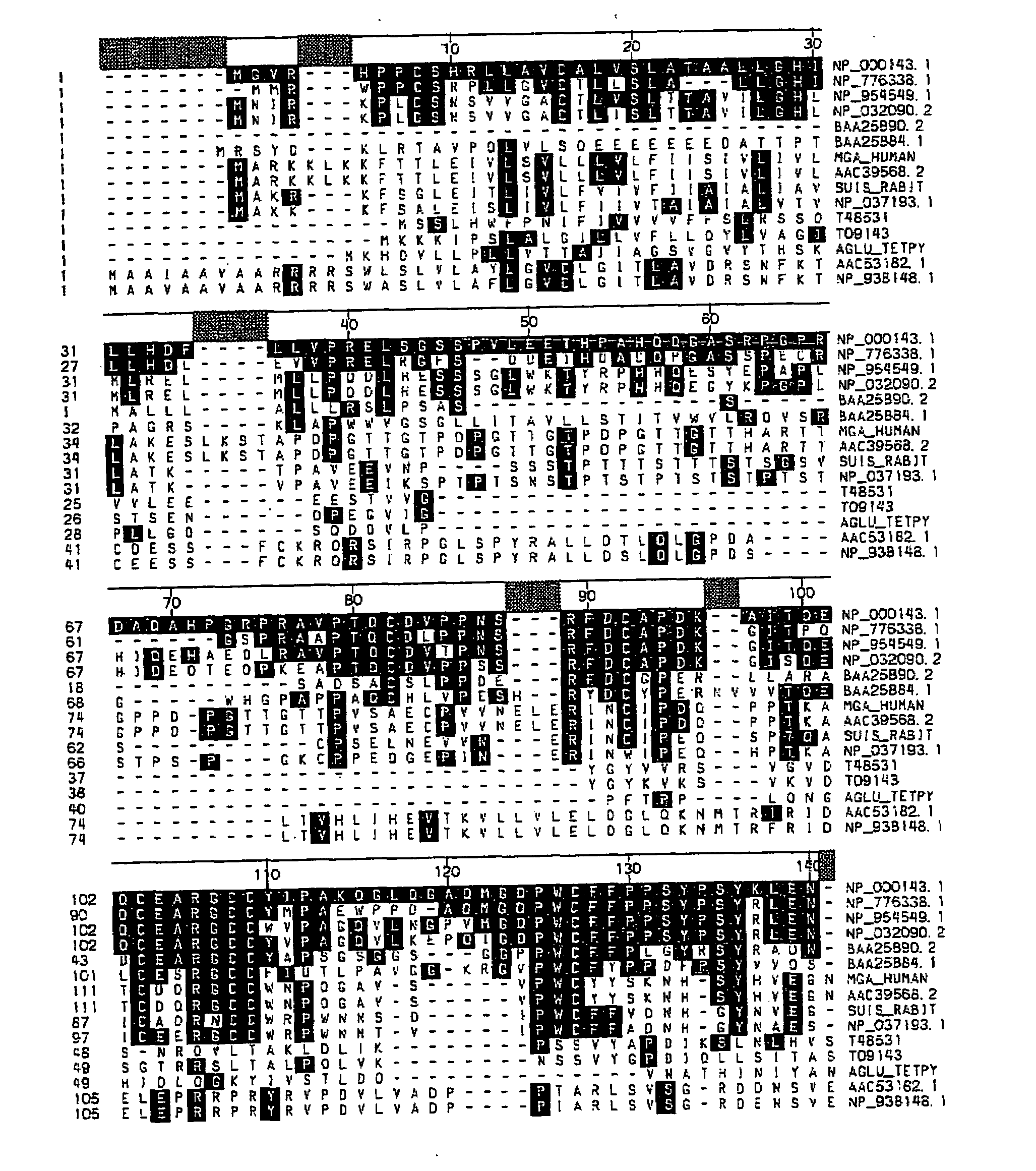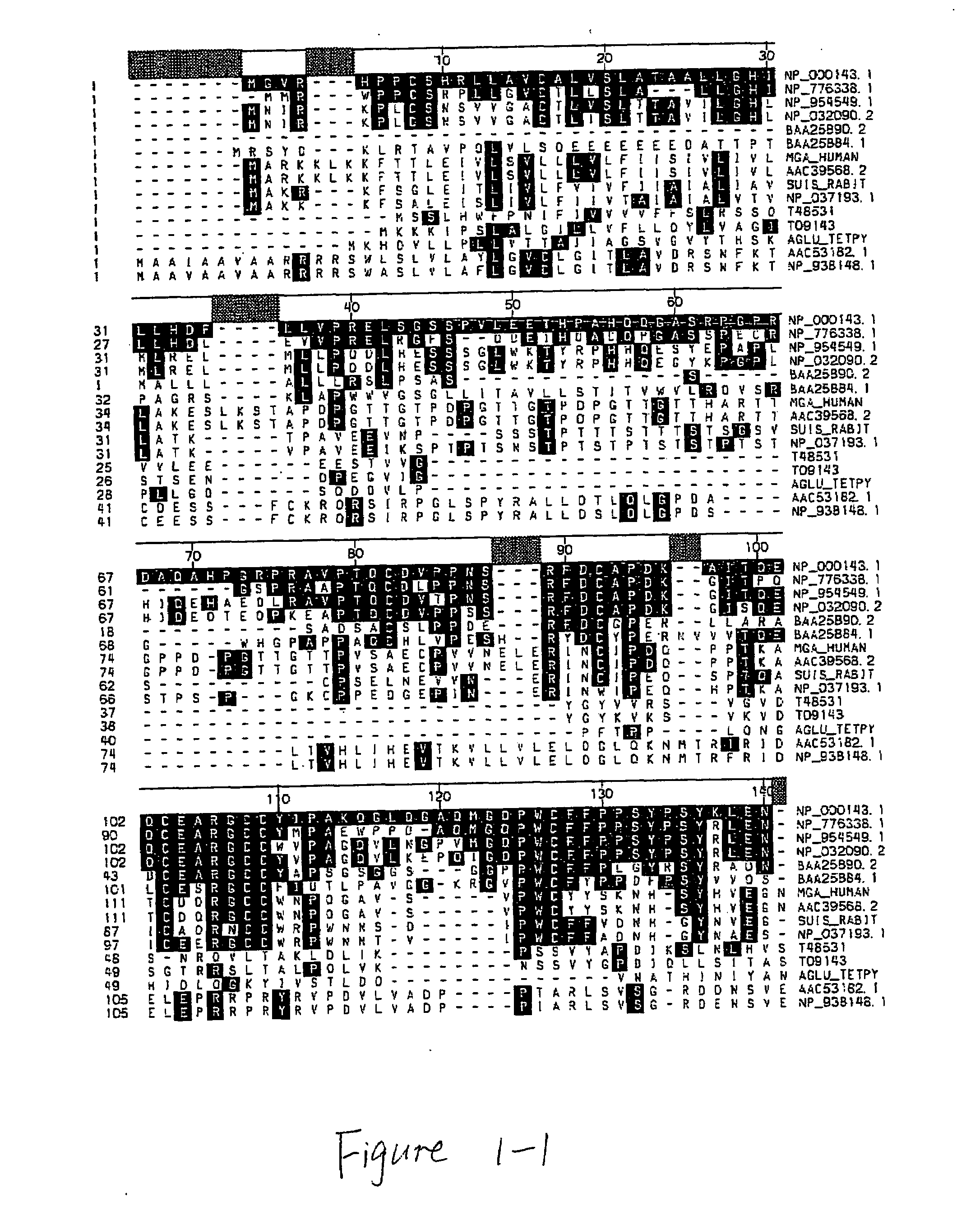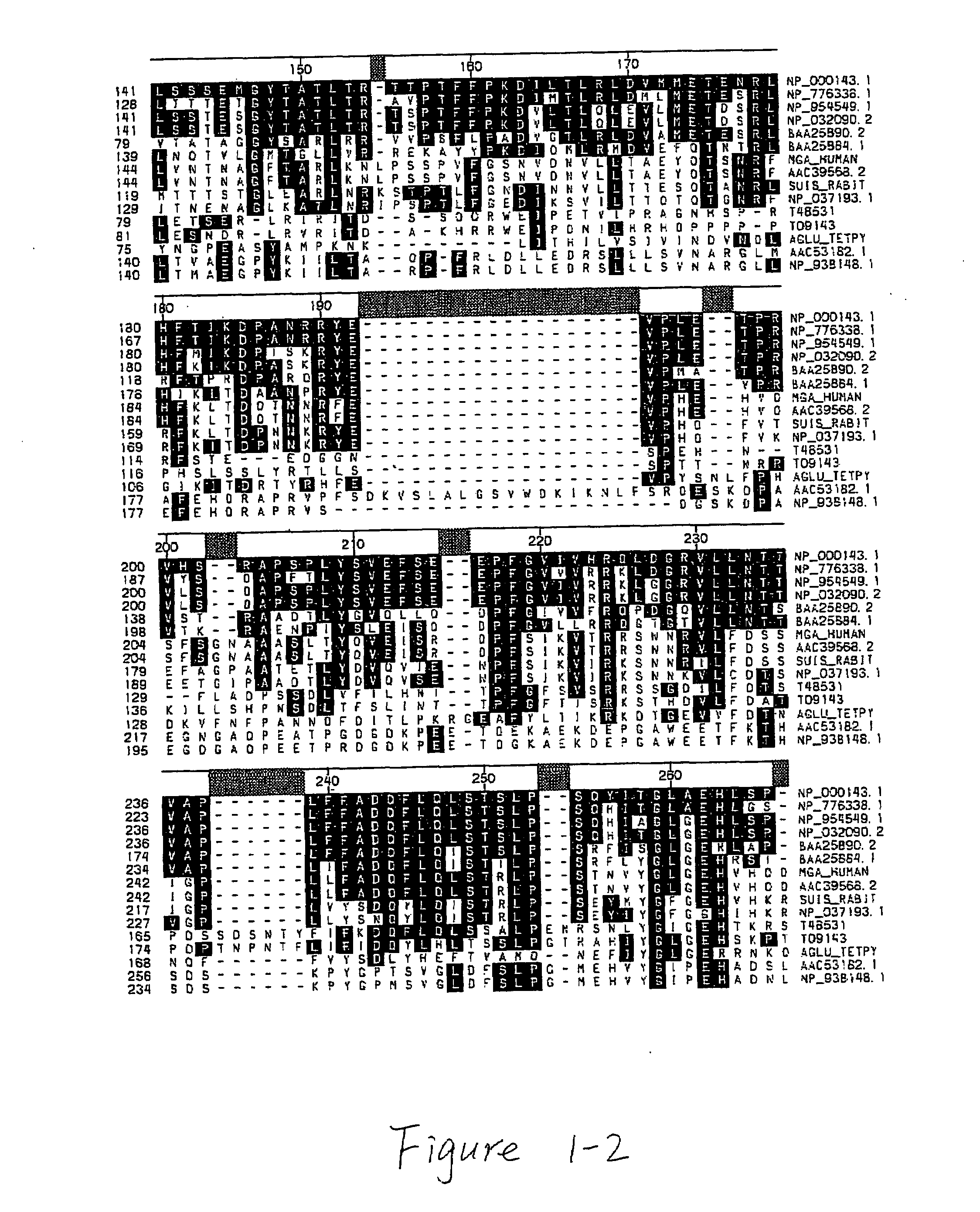Acid alpha-glucosidase and fragments thereof
a technology of acid alpha-glucosidase and alpha-glucosidase, which is applied in the field of acid alpha-glucosidase, can solve the problems of inefficient delivery of m6p-dependent gaa to lysosomes, accumulated glycogen ultimately impairing muscle function, and no approved treatment available to cure or slow the progress of pompe disease. , to achieve the effect of efficient delivery of gaa
- Summary
- Abstract
- Description
- Claims
- Application Information
AI Technical Summary
Benefits of technology
Problems solved by technology
Method used
Image
Examples
example 1
Trans Expression of GAA
[0099]The following primers were used to generate a gene cassette containing the human IGF-II signal sequence fused to human GAA residues 791-952 (the C-terminal domain).
(SEQ ID NO: 6)GAA41:GGAATTCAGGCGCGCCGGCAGCTCCCCGTGAGCCAGCC(SEQ ID NO: 7)GAA27:GCTCTAGACTAACACCAGCTGACGAGAAACTGC
GAA41 and GAA27 were used to amplify the C-terminal domain of GAA by PCR. The amplified fragment contains an Asc I site at the 5′ terminus. The SS N-tag encoding the IGF-II signal sequence (residues 1-25) with an AscI site at the 3′ end was then fused at the Asc I site to the GAA C-terminal domain and the cassette was cloned in pCEP4 to generate plasmid pCEP-SS-GAA-791-952. The SS N-tag nucleic acid sequence is shown as below.
DNA sequence of the SS N-tag (SEQ ID NO: 8):gaattcACACCAATGGGAATCCCAATGGGGAAGTCGATGCTGGTGCTTCTCACCTTCTTGGCCTTCGCCTCGTGCTGCATTGCTGCTggcgcgccg
[0100]The following additional plasmids were generated similarly: pCEP-GAA A 817-952 that lacks C-terminal GAA residues 817...
example 2
Region Required for Efficient GAA Trans-Expression
[0104]In the transient co-transfection experiment described in Example 1, the GAA region including amino acid residues 792-817 is present in both halves of the trans-expression constructs. In order to determine if the overlap of this region is necessary for efficient trans-expression, a pair of constructs, pCEP-GAAΔ791-952-GILTΔ1-7 and PCEP-SS-GAA-791-952, were designed with no overlap and the GILT tag was fused at position 791. As indicated in Table 2, transient co-transfection experiments demonstrated that the presence of amino acid residues 792-817 within the C-terminal domain is required for efficient GAA trans-expression.
TABLE 2Amino acid residues 792-817 is requiredfor efficient GAA trans-expression.GAA activityPlasmid 1Plasmid 2(nmol / hr-ml)PCEP-GAA58PCEP-SS-GAA-791-9521PCEP-GAAΔ817-952-1GILTΔ1-7pCEP-GAAΔ791-952-1GILTΔ1-7pCEP-SS-GAA-817-9521PCEP-SS-GAA-791-952pCEP-GAAΔ791-952-2GILTΔ1-7PCEP-SS-GAA-791-952PCEP-GAAΔ817-952-16GILTΔ...
example 3
Construction of a GAA Protein with an Internal GILT Tag
[0105]PCR was used to first generate an insertion of the nucleotide sequence GGCGCGCCG (SEQ ID NO:11) after nucleotide 2370 of the complete human GAA sequence. This insertion forms an AscI restriction site preceding Ala791. The GILT tag was PCR-amplified with the following DNA oligos:
(SEQ ID NO: 12)IGF7:gctctagaggcgcgccCTCGGACTTGGCGGGGGTAGC(SEQ ID NO: 13)IGF8:ggaattcaggcgcgccgGCTTACCGCCCCAGTGAGAC
The amplified GILT tag contains an AscI restriction site at each terminus. This GILT tag was digested with AscI and inserted into the AscI site preceding GAA Ala791 as described above. DNA sequencing confirmed the in-frame orientation of the GILT insertion. This GAA cassette containing an internal GILT tag preceding Ala791 was expressed in vector pCEP4 in a plasmid named pCEP-GAA-IRGILT-4. pCEP-GAA-IRGILT-4 was found to contain a PCR-generated mutation T1712C within the GAA coding sequence. This construct produced functional GAA protein....
PUM
| Property | Measurement | Unit |
|---|---|---|
| pH | aaaaa | aaaaa |
| pH | aaaaa | aaaaa |
| dissociation constant | aaaaa | aaaaa |
Abstract
Description
Claims
Application Information
 Login to View More
Login to View More - R&D
- Intellectual Property
- Life Sciences
- Materials
- Tech Scout
- Unparalleled Data Quality
- Higher Quality Content
- 60% Fewer Hallucinations
Browse by: Latest US Patents, China's latest patents, Technical Efficacy Thesaurus, Application Domain, Technology Topic, Popular Technical Reports.
© 2025 PatSnap. All rights reserved.Legal|Privacy policy|Modern Slavery Act Transparency Statement|Sitemap|About US| Contact US: help@patsnap.com



